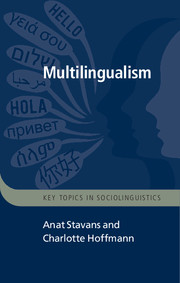Book contents
Introduction
Published online by Cambridge University Press: 05 February 2015
Summary
I wish to place before the reader some of the usual descriptions of the Taj, and ask him to take note of the impressions left in his mind. These descriptions do really state the truth – as nearly as the limitations of languages will allow. But language is a treacherous thing, a most unsure vehicle, and it can seldom arrange descriptive words in such a way that they will not inflate the facts – by help of the reader’s imagination, which is always ready to take a hand and work for nothing, and do the bulk of it at that.
Mark Twain, Following the Equator, Ch. LIXOur collaboration on this book began, fittingly, in the Basque country, when we were invited to talk about trilingualism. It is probably not accidental that this meeting should have encouraged us to embark on a project about multilingualism: we found ourselves in a bilingual country, were giving our papers in a third language, English, and we were drawing on our experiences of multilingual family environments.
For over half a century now, ‘bilingualism’ (the use of two languages) has become the subject of systematic scholarly investigation. Bilingualism has been scientifically reported on as an alternative to (sometimes as a divergence from) monolingualism. In this sense, the study of bilingualism encompassed any language situation in individuals or societies that involved more than one language. Mostly it covered contact situations between two languages but it also subsumed other contexts involving trilingualism or multilingualism. In this book we propose to look at ‘trilingualism’ (the use of three languages) and multilingualism (the use of more than two languages) as distinct from bilingualism because we feel that the subject merits separate treatment, both when looking at individuals who acquire and use three (or more) languages and when taking a wider sociolinguistic perspective. Naturally, it is not always possible to draw a clear line between the number of languages present in certain contact situations, especially in sociolinguistic contexts, and our use of the term multilingualism takes cognisance of that.
- Type
- Chapter
- Information
- Multilingualism , pp. 1 - 8Publisher: Cambridge University PressPrint publication year: 2015

